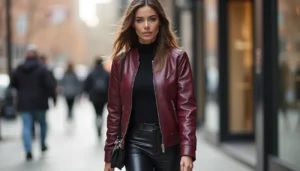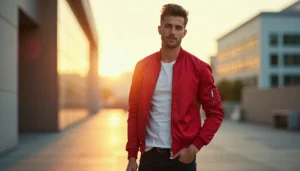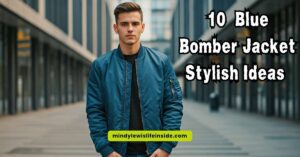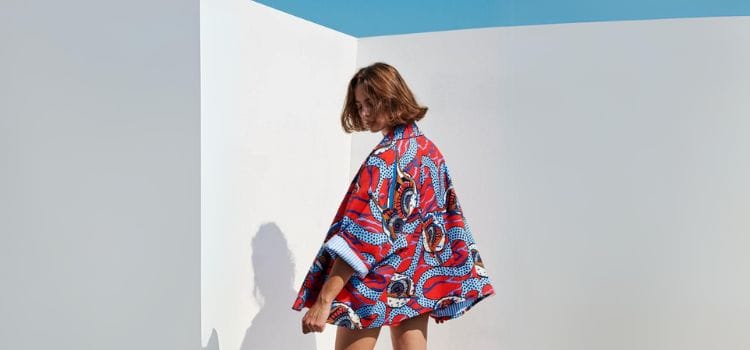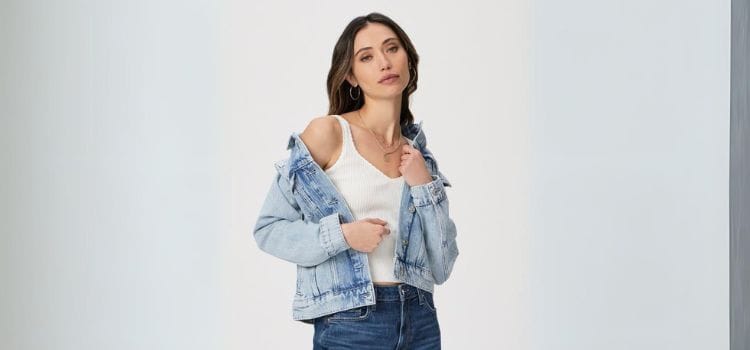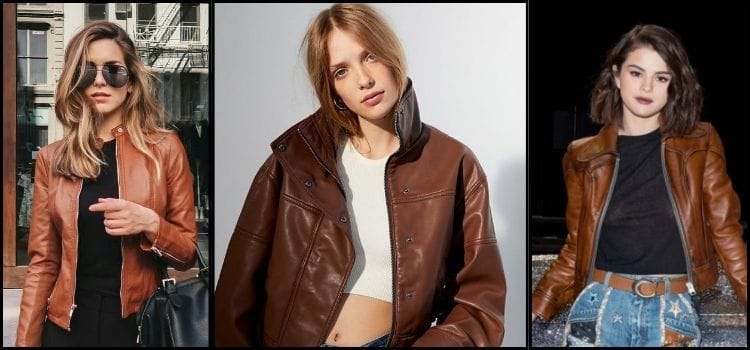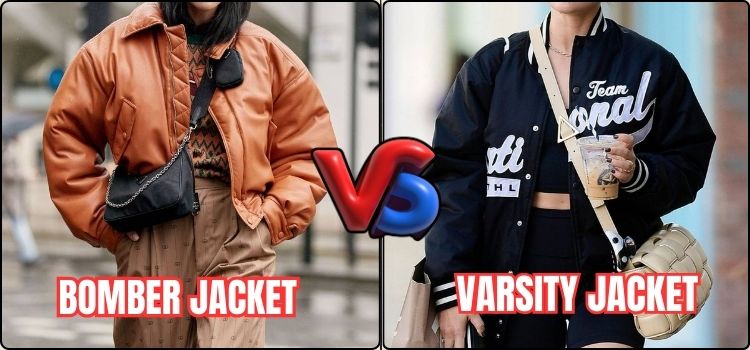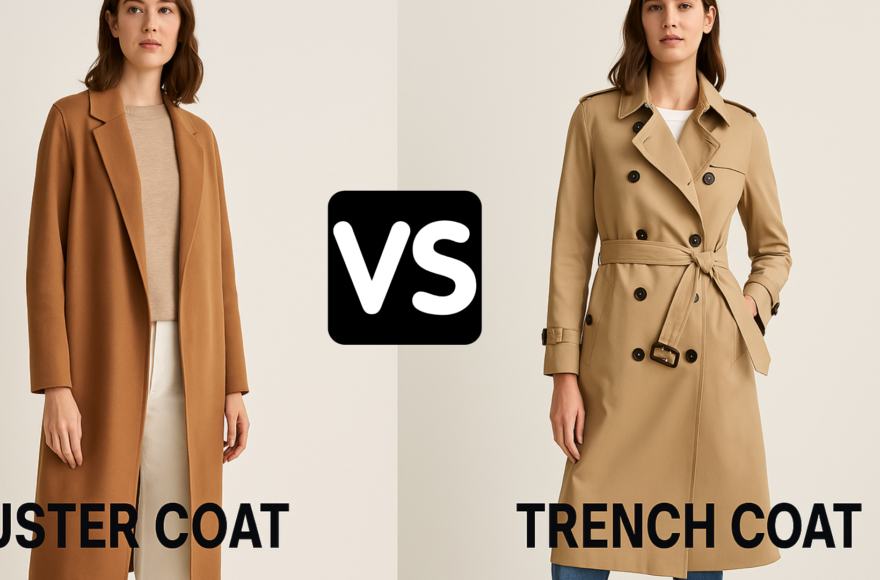The Secret Art of Styling Bomber Jackets: Expert Guide for 2025

As an Amazon Associate, I earn from qualifying purchases
Bomber jacket styles have fascinated me ever since I learned they were originally designed for military pilots during World War I to keep them warm in freezing, unpressurized cockpits. What started as purely functional military gear in the 1920s has evolved into one of fashion’s most enduring and versatile pieces. The first official bomber jacket—the US Army Type A-1—was issued in 1927, setting the stage for an iconic fashion evolution that continues today.
I’ve found that the true appeal of bomber jackets lies in their chameleon-like versatility. Whether you’re drawn to the classic leather A-2 that was manufactured until 1943 , the sheepskin B-3 (considered the first true bomber jacket) , or modern variations in nylon, cotton, or even satin , there’s a bomber jacket style for every wardrobe. Different variations like the MA-1, B-3, and G-1 have emerged over time, each designed with specific purposes in mind. Today, I’m excited to share my personal insights on how to style bomber jackets for maximum impact, the perfect fit you should aim for, and the various types of bomber jackets worth adding to your collection.
The Evolution of Bomber Jackets
The humble bomber jacket began its journey in 1917 when the US Army Aviation Clothing Board created what were then called “flight jackets” . Initially crafted from horsehide, sealskin, and thick leather with fur linings, these early jackets served a purely practical purpose—protecting pilots from the bone-chilling temperatures of high-altitude flying.
From military gear to fashion staple
The transition from military equipment to civilian fashion didn’t happen overnight. As aviation technology advanced between the World Wars, so did the design of flight jackets. Cockpits became narrower, more enclosed, and filled with instrumentation, requiring jackets that offered both warmth and mobility.
After World War II, these jackets began appearing in military surplus stores, where civilians discovered their practical appeal. By the late 1950s, bomber jackets had made their way to Europe, and throughout the 1960s, they infiltrated civilian wardrobes across the globe . The iconic orange lining—originally designed so downed pilots could reverse their jackets to signal rescuers—became a distinctive fashion feature.
Hollywood subsequently played a pivotal role in popularizing bomber jackets. Steve McQueen’s appearance in The Hunter (1980) and Tom Cruise’s iconic role in Top Gun (1986) cemented the bomber jacket’s status as a symbol of rugged coolness . Once adopted by various subcultures, from British punks to hip-hop artists, the bomber jacket transcended its military origins to become a true fashion staple .
Key historical models: A-1, A-2, B-3, MA-1, G-1
Each major bomber jacket model represents an evolutionary step in both function and style:
- The A-1 jacket (1927) marked the first standardized flight jacket issued by the US Army. Made from horsehide, sheepskin, or goatskin leather, it featured a button-up closure with a knitted collar, waistband, and cuffs—elements that would define bomber jackets for decades to come . What made the A-1 revolutionary was its streamlined shape compared to earlier flight jackets, with a flattering fit high on the waist .
- The A-2 jacket (1931-1943) improved upon the A-1 by replacing buttons with a more secure zipper closure and adding a wind flap and high collar . The A-2 became particularly iconic as the jacket worn by WWII’s Air Corps pilots, who often personalized them with artwork depicting their combat exploits .
- The B-3 jacket (mid-1930s) was specifically designed for high-altitude bombers. Crafted from sheepskin with heavy-duty sheep fur lining, this bulkier model lacked the knit waistband of previous flight jackets but included two leather straps to close the wide sheepskin collar . It was purposefully designed to keep bombers warm at altitudes reaching 25,000 feet.
- The G-1 jacket (1930s) featured the iconic mouton fur collar and bi-swing back for improved mobility. Additionally, it included underarm gussets and an extra panel of leather on the back, making it more flexible for pilots . Many recognize this as the “Top Gun jacket” worn by Tom Cruise.
- The MA-1 jacket (1949) represents perhaps the most significant evolution, replacing leather with nylon and the fur collar with knitted wool . The switch to synthetic materials solved practical problems—leather jackets could freeze at high altitudes if they got wet before flight . The MA-1’s lightweight design, orange lining, and eventually its sage green color (adopted during the Korean War for better camouflage) created the template for what most people today identify as the classic bomber jacket.
Throughout these iterations, bomber jackets maintained their core characteristics: short length (typically stopping at the waist), elasticated cuffs and waistband, and a focus on warmth without sacrificing mobility.
Types of Bomber Jackets You Should Know
Walking into any fashion store today, I’m amazed by the sheer variety of bomber jacket styles available. What began as military equipment has branched into numerous distinctive types, each offering unique aesthetics and functionality.
Classic leather bomber jackets
Leather bomber jackets remain the gold standard for authenticity and durability. Originally designed for pilots like Charles Lindbergh and Amelia Earhart, these jackets blocked wind effectively at high altitudes. The A-2 leather bomber, developed for the Army Air Corps (now US Air Force), and the G-1 leather flight jacket for Navy Pilots exemplify this timeless style.
Modern leather bombers feature high-quality linings for superior thermal insulation, with some incorporating wraparound collars, front zippers, closed cuffs, and elastic bands around the bottom . I’ve found that black or brown leather bombers are most versatile, complementing virtually any outfit while providing excellent protection against harsh weather conditions.
Nylon and satin styles
The iconic MA-1 bomber jacket, created by the US Air Force in 1955, marked a significant departure from leather traditions. This lightweight nylon jacket—recognizable by its bright orange lining (originally designed to help rescue teams locate downed pilots)—was among the first military garments to achieve civilian fashion status .
Consequently, satin bomber jackets evolved as a more luxurious variation. These jackets feature a smooth, shiny exterior that creates an eye-catching sheen . Although primarily fashion-forward rather than functional, satin bombers offer lightweight breathability, making them perfect for spring and summer wear . Their polished finish provides an elegant alternative to traditional bomber styles while maintaining the classic silhouette.
Wool and shearling-lined bombers
For maximum warmth, nothing surpasses shearling-lined bomber jackets. The legendary B-3 bomber, with its sheepskin construction and heavy-duty sheep fur lining, was specifically engineered for high-altitude flying . These jackets combine durable exteriors with exceptionally soft, warm interiors.
Modern sheepskin bombers remain popular despite technological advancements in synthetic materials. As one manufacturer notes, “Forget your cold nylon puffer—maybe lighter but nowhere as cozy” . These jackets provide unmatched protection against frigid temperatures while maintaining a classic esthetic. Though typically more expensive than other styles, their durability and timeless appeal make them worthwhile investments.
Varsity and modern fashion bombers
Varsity jackets (also called letterman jackets) represent the sportier evolution of bomber styling. Originating in late 19th century Harvard University, these jackets traditionally feature wool bodies with contrasting leather sleeves and are often embellished with patches or embroidered logos .
Beyond their athletic associations, varsity bombers hold significant cultural meaning. “For many, receiving a varsity jacket is a rite of passage. It symbolizes hard work, dedication, and success in sports or academics” . The customization possibilities with patches, embroidery, and personalized details make each varsity jacket uniquely meaningful to its wearer.
Fashion designers continue to reimagine bomber jackets with innovative materials and styling. From quilted patterns for enhanced insulation to lightweight versions for warmer weather, modern bomber jacket styles offer something for every season and occasion . Embroidered designs, lace fabrics, and unconventional materials ensure this classic silhouette remains eternally fresh and relevant.
How Should a Bomber Jacket Fit?
Finding the perfect bomber jacket is only half the battle—knowing how it should fit makes all the difference between looking stylish and appearing sloppy. Over the years, I’ve learned that fit can truly make or break this iconic piece.
Ideal body and sleeve length
The foundation of a well-fitted bomber jacket starts with the shoulders. Ideally, the shoulder seams should sit right at the edge of your natural shoulder line, creating a structured silhouette. For leather bombers, this alignment is particularly important as it helps the jacket drape properly without looking boxy. Modern nylon bombers can be slightly more forgiving—the seams may fall up to half an inch beyond your shoulder break without compromising style.
Regarding sleeves, the perfect length ends right at your wrist bone. This allows for comfortable movement while maintaining a clean line. The sleeve shouldn’t extend past your knuckles nor ride up above your wrists when you raise your arms. Moreover, different materials may require slight adjustments—shearling-lined jackets typically feature sleeves that reach anywhere from your wrist to half an inch over your thumb joint.
Waist and cuff snugness
The elastic waistband of your bomber should sit comfortably at or slightly below your belt line. This creates the jacket’s characteristic tapered silhouette without feeling restrictive. Essentially, you want a fit that’s snug enough to maintain shape but loose enough to allow movement and potentially accommodate layers underneath.
Cuffs play a crucial role in both comfort and style. They should grip your wrists gently without pinching or drooping. This “seal” helps maintain warmth while ensuring the sleeves stay in place during movement. Notably, the ribbed cuffs and waistband serve as anchors for the jacket’s overall shape—if they’re too loose, the entire silhouette becomes compromised.
Common fit mistakes to avoid
The most frequent fitting error is selecting the wrong size altogether. An oversized bomber creates a sloppy appearance with drooping shoulders and excess fabric, while an undersized jacket restricts movement and risks damaging seams.
Another mistake is ignoring proportions—pairing a bomber with items that throw off your silhouette. For instance, extremely baggy trousers with a fitted bomber can create an unbalanced look.
Primarily, remember that different bomber styles have slightly different fitting requirements. Classic leather versions should fit more snugly than modern nylon MA-1 jackets, which are designed with a more relaxed, layering-friendly fit. The key is finding that sweet spot between structure and comfort that suits both your body type and the specific bomber style.
The Secret Art of Styling Bomber Jackets
Mastering the art of styling bomber jackets opens up endless fashion possibilities. As someone who’s experimented with various bomber jacket outfits, I’ve discovered that versatility is their greatest strength.
Pairing with casual outfits
For effortless everyday style, I pair my bomber jacket with a classic white or graphic t-shirt and slim or straight-leg jeans. This combination creates a timeless silhouette that works for nearly any casual setting. For a laid-back weekend look, I’ll throw on a bomber with distressed denim and sneakers—perfect for running errands or grabbing coffee. Furthermore, a leather bomber paired with dark-wash jeans offers that “casually cool” vibe that looks intentional without trying too hard.
Smart casual and business casual looks
To elevate the bomber jacket for semi-formal settings, I opt for neutral or dark-colored jackets like navy, gray, or black. These maintain a refined esthetic while adding contemporary edge to business casual attire. Pairing a bomber with a button-down shirt and chinos creates a polished yet relaxed look suitable for dinner dates or office environments. Interestingly, some professionals have started incorporating bombers with tailored trousers as a modern alternative to blazers.
Layering tips for colder months
In winter, I layer my bomber over a thick turtleneck or hoodie for extra warmth. Shearling-lined bombers offer superior insulation, making them ideal for freezing temperatures. For autumn, I prefer suede or quilted fabric bombers that provide warmth and texture. A wool or cashmere scarf adds sophistication, alongside accessories like beanies and gloves that enhance both style and functionality.
Color coordination and contrast
When styling my bomber jackets, I follow these color principles:
- Monochromatic magic: Pair a black bomber with black skinny jeans and Chelsea boots for a sleek silhouette
- Complementary contrast: Match olive green bombers with earthy tones like brown or beige
- Statement balance: When wearing a bold-colored bomber, keep the rest of my outfit neutral
Footwear that complements bomber jackets
My footwear choice dramatically impacts the bomber jacket’s overall vibe. White sneakers create a clean, minimalist look with any bomber style. For rugged appeal, I pair leather bombers with combat or Chelsea boots. To dress up my bomber for smart-casual occasions, loafers or derby shoes add a sophisticated touch. Above all, the right footwear ties the entire outfit together, making the bomber jacket the undisputed star of the show.
Top Brands and Where to Buy in 2025
In 2025, the bomber jacket market has expanded with options ranging from historically accurate reproductions to cutting-edge fashion statements. After finding your perfect bomber style and mastering how to wear it, knowing where to shop completes your journey.
Vintage and reproduction brands
For authenticity enthusiasts, Eastman Leather Clothing stands out with their extremely authentic, handmade reproductions of WWII flight jackets. Established in 1984, their commitment to historical accuracy and quality craftsmanship has earned them an international reputation for excellence. As they note, “attention to authenticity, quality, and history, is at the heart of these products.”
Alpha Industries remains the gold standard for military-inspired bomber jackets, having manufactured them for over 60 years. Their Heritage MA-1 bomber jacket stays faithful to classic military specifications, ideal for those seeking vintage appeal with modern reliability. Similarly, Cockpit USA offers American-made military flight jackets that honor our armed forces, including specialized Top Gun flight jackets inspired by the iconic film.
Modern fashion-forward labels
Luxury fashion houses have embraced bomber jacket styles with contemporary twists. Coach offers refined leather bombers, while Luca Faloni produces luxurious goatskin suede leather bombers handcrafted in Veneto, Italy, featuring pure cashmere details. For those seeking unique designs, CLOSED creates minimalist bomber jackets from Italian nylon with water-repellent properties.
Independent designers like Siddhant Agrawal Label present fashion-forward options such as their Nebula Bomber Jacket, featuring bold patterns and modern tri-zipper details that make statement pieces for the fashion-conscious.
Budget-friendly options
Quality bomber jackets needn’t break the bank. Gap offers relaxed bomber jackets starting around $39, making them accessible entry points into bomber jacket styling. Old Navy provides oversized bombers with felt finishes at remarkable price points—sometimes as low as $15 during sales.
Uniqlo stands out for affordable, minimalist bomber options with clean lines and quality construction, while Abercrombie & Fitch offers options like their quilted bomber jacket, considered among the warmest bomber jackets available for colder climates.
Regardless of budget or style preference, 2025’s bomber jacket landscape offers something for everyone—from historically accurate military reproductions to boundary-pushing fashion statements.
Final Thoughts on Bomber Jacket Styling
Throughout my journey with bomber jackets, I’ve witnessed their remarkable transformation from military necessity to fashion essential. The bomber jacket stands as perhaps the most versatile outerwear piece anyone can own. Whether you prefer the rugged authenticity of a leather A-2, the lightweight practicality of an MA-1, or the cozy warmth of a shearling-lined B-3, bomber jackets offer something for every style preference and occasion.
Finding your perfect bomber requires attention to fit details. Shoulder seams should align with your natural shoulders while sleeves end precisely at your wrist. Additionally, the waistband must sit comfortably at your belt line without restricting movement. Once you’ve found this sweet spot between structure and comfort, styling possibilities become endless.
The true beauty of bomber jackets lies in their chameleon-like ability to adapt. Paired with jeans and a t-shirt, they create effortless casual looks. Matched with chinos and a button-down, they elevate your smart-casual game. Layered over sweaters or hoodies, they provide both warmth and style during colder months.
Despite technological advancements and fashion evolution since their 1917 origins, bomber jackets remain fundamentally unchanged in their appeal. Their enduring popularity speaks to the perfect balance they strike between functionality and style. After all, few garments can claim over a century of relevance while continuously reinventing themselves.
My advice? Invest in at least one quality bomber jacket that fits your lifestyle and personal esthetic. Although high-end options from specialist manufacturers offer unparalleled quality, plenty of budget-friendly alternatives exist without compromising style. Regardless of which bomber you choose, this iconic piece will undoubtedly become one of the most versatile and beloved items in your wardrobe for years to come.
As an Amazon Associate, I earn from qualifying purchases

